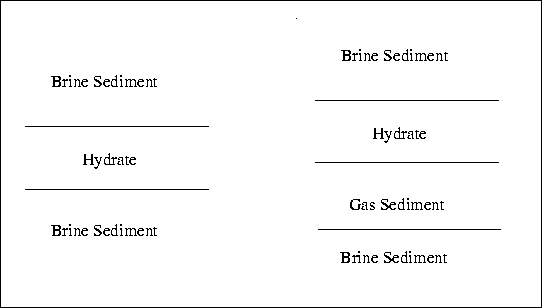




Next: Hydrate deposition by cementation
Up: Ecker et al.: Methane
Previous: Velocity behavior of Model
In order to evaluate the effects of the different hydrate
deposition models
on seismic reflection responses, we performed 1-D, elastic modeling
using the Thompson-Haskell reflectivity method. All layers were assumed
to be flat and approximately 300 meters thick. We used the
previously-calculated,
saturated velocities of the different hydrate models as
input for the hydrate-saturated layer. The hydrate layer was overlain
by a brine-saturated sandstone and underlain by either a brine-saturated
sandstone layer or a gas-saturated sandstone layer. For the
gas-saturated sandstone layer we chose a 50% gas saturation. The properties of
theses layers were also calculated in the previous section (Figure
3). The configuration of the two different synthetic models,
one model simulating the structure for hydrate overlaying brine, one simulating
hydrate overlaying gas, can be seen in Figure 4. Both models were
overlain by a thick water column.
model
Figure 4 Synthetic models for the hydrate structures.
The left model shows the configuration for hydrate overlaying brine,
the right shows hydrate over gas.

We generated synthetic seismograms for different
hydrate saturation in the hydrate layer and compared the different
seismic responses. Subsequently, in order to evaluate the actual
amplitude behavior at the BSR, which is the bottom of the hydrate stability
zone, we determined its AVO response using Zoeppritz equations.





Next: Hydrate deposition by cementation
Up: Ecker et al.: Methane
Previous: Velocity behavior of Model
Stanford Exploration Project
11/12/1997

